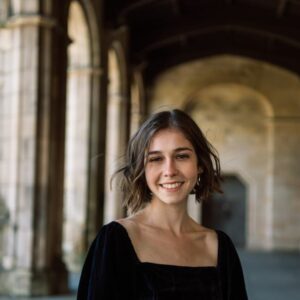Summary:
Previously existing solely as a pet, the zebrafish (danio rerio)was first brought into the lab in the 1960s by University of Oregon Professor, George Streisnger. In the last two decades, the zebrafish has become an increasingly prevalent model for biomedical research: being used in approximately 600 labs worldwide (Heath, 2020). We’ve previously written about zebrafishes’ ability to be utilized in anti-inflammation research, rare disease research, neuroscience research, and as a tool for drug discovery, but in this series we are going to dive deeper, and discuss the benefits to researchers by leveraging this model.
Zebrafish are a particularly beneficial model organism, because like other ‘alternative animals’, zebrafish offer a more simplistic, cost effective substitute for a mammalian model. That being said, of all the alternative models (C. elegans, drosophila (fruit fly), yeast, artemia salina (brine shrimp)), zebrafish are quite complex: as a vertebrate model, zebrafish contain many of the same organs and tissue types as humans [Figure 1]. Furthermore, the nervous system structure is highly conserved between zebrafish and humans [Figure 2].

Figure 1. Shared disease genes and organs between zebrafish and humans.
.

Figure 2. Conserved brain structures between zebrafish and humans.
In this multi-part series, we are going to highlight zebrafishes’ distinct advantages as an animal model, and discuss how they can be used in conjunction with mammalian mouse models to shorten the timeline of an experiment.
Zebrafish have inherent benefits for research overall, such as their small size, which enables easy lab maintenance, and their large brood size and short lifespan which enables our experts at InVivo Biosystems to get the data our customers need in as little as 2 months [Figure 3].

Figure 3. Timeline of mouse vs. zebrafish development.
While the traditional mode of thought is that “someone else’s model is uninteresting and their own model is spellbinding,” increasingly, researchers are realizing that, “the more models the better, actually, as we try to explore phenotypes,” gene variants, and personalize medicine (Noebels, 2021).
For instance, zebrafish are better suited for certain studies due to their transparency and ex utero development which enables easy observation of development and high throughput capacity. As such, zebrafish are gold-standard models for inflammation studies, developmental research, retinal degenerations studies, and drug discovery studies.
One of the most underutilized ways zebrafish can help accelerate biomedical research is by being used in combination with mammalian mouse models, as a pre-mouse model. In this capacity, zebrafish can offer a good first step for drug targets to be screened quickly and efficiently before moving to the more expensive, time-consuming pre-clinical mammalian models.
Conclusion:
Since their introduction to the lab zebrafish have continued to grow in power and popularity, however, they are still an under-appreciated model, particularly as a precursor to lengthier mammalian studies.
InVivo Biosystems have decided to take advantage of the zebrafish model. As a full Service preclinical CRO, we offer multiple gene-editing zebrafish services including mutagenesis, tagging, and transgenesis. We utilize CRISPR and Tol2 tools to create models of human diseases, create platforms for drug discovery and toxicity testing, and work with our customers to design the experiments they need. If you’re interested in learning more about our capabilities our experts are always passionate to discuss potential projects!
Follow along with this blog series to read specifically how zebrafish can benefit biomedical research , and create unique models for anti-seizure, organ regeneration, and microbiome research.
To read more about the current state of zebrafish research read our recent blogs here:
- Using Zebrafish CRO To Accelerate Grant Application Process [Customer Story]
- A Natural Fit – Using Zebrafish To Evaluate Natural Compounds For Anti-Inflammatory Properties
- Chemicals Models Of Parkinson’s Disease In Larval Zebrafish
- Review Of Zebrafish Models To Boost Research In Rare Genetic Diseases
To talk with one of our zebrafish gene-editing experts click here.
References:
- Heath, J. (2020). Animals in research: zebrafish. Retrieved 8 July 2020, from https://theconversation.com/animals-in-research-zebrafish-13804
- Noebels (2021). Seventeen Minutes Of Science: Gene Mutations Involved In Epilepsy And Cortical Hyperexcitability. InVivo Biosystems. https://invivobiosystems.com/17-minutes-of-science/seventeen-minutes-of-science-gene-mutations-involved-in-epilepsy-and-cortical-hyperexcitability/
InVivo Biosystems have decided to take advantage of the zebrafish model. As a full Service preclinical CRO, we offer multiple gene-editing zebrafish services including mutagenesis, tagging, transgenesis and zebrafish toxicity testing.



